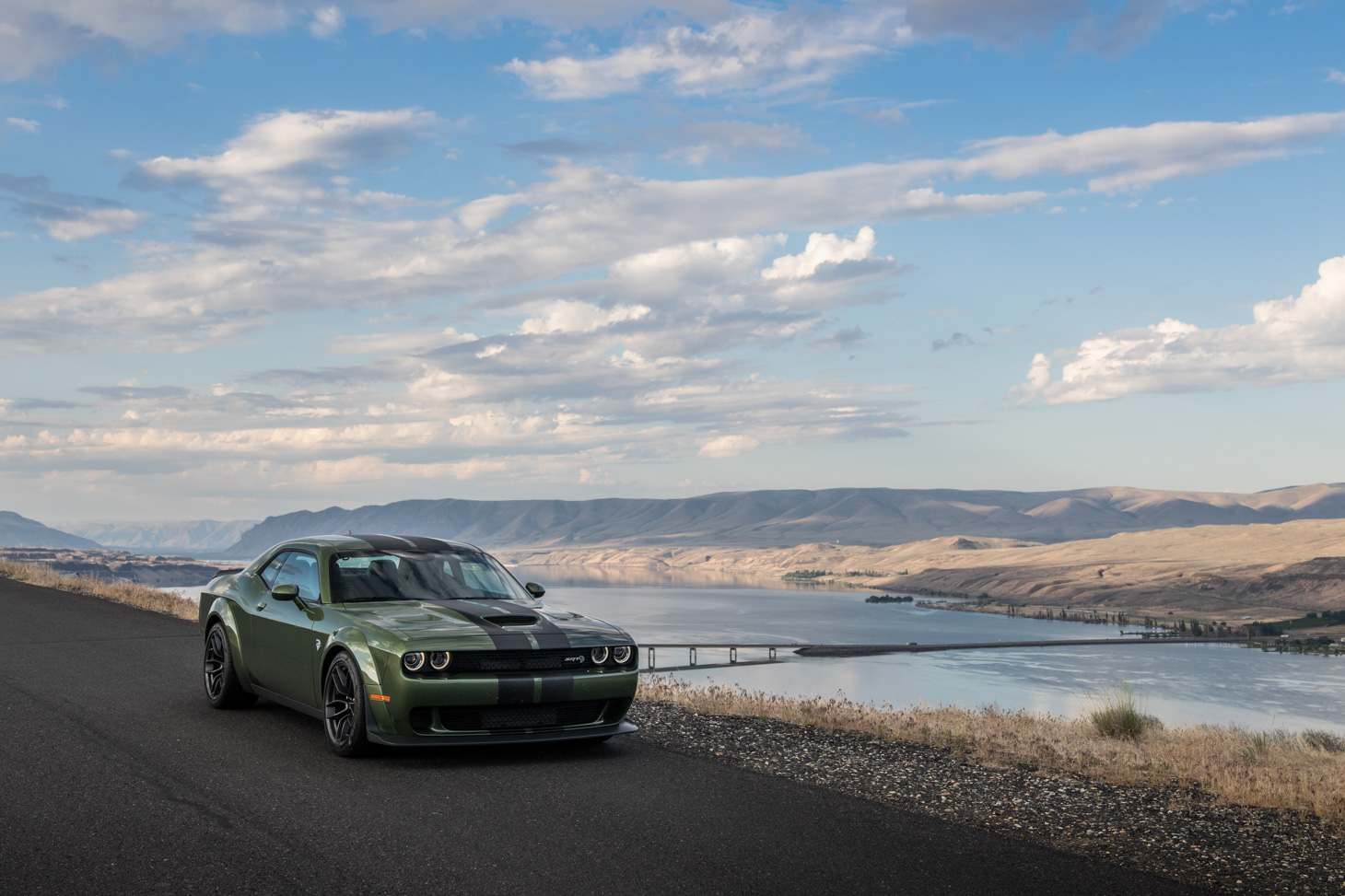Somewhere in the mountains of the Idaho panhandle, a wide green beast noses to the left around a mooching semi-trailer and unleashes the thunder of a big-bore supercharged V8. The truck disappears into the rearview mirror in a single lunge, short passing sections no trouble with this amount of firepower on board. Around the next corner there’s an oncoming trooper, prompting a downward glance at the speedometer to make sure everything’s within limits. But the officer’s in a big Dodge, too, and just waves hello.
Further down the road, highway traffic has come to a halt while road crews shuttle equipment around. As the delay drags on, people get out of their cars and stretch their legs. More than a few wander over to get a look at the hulking green coupe. “Hellcat?” Yep. “That the widebody?” Double yep. “My uncle had a Challenger back in the ’70s…” Everybody loves a charming outlaw, and both the Dodge Challenger two-door coupe and the Charger four-door sedan make friends everywhere they go. But it’s time to point those aircraft-carrier-sized hoods at the horizon and head off into the sunset. The V8 Challenger and Charger have roared their last.
The third-generation Dodge Challenger debuted at the Chicago and Philadelphia auto shows in the spring of 2008. The last one rolled off the line in Brampton, Ontario, in December of last year. Yes, Ontario. For the full 15-year run of the Challenger (and the slightly longer run of the related Charger sedan), the baddest domestic muscle car you could buy came with a whiff of maple syrup.
A decade and a half without a complete overhaul is a pretty good run for any vehicle, especially one built to emulate a 1970s car that only lasted four model years. But then, the Challenger’s appeal was that it was timelessly old school right from the beginning, with the design team wheeling an actual 1970 Challenger into the studio while they worked.
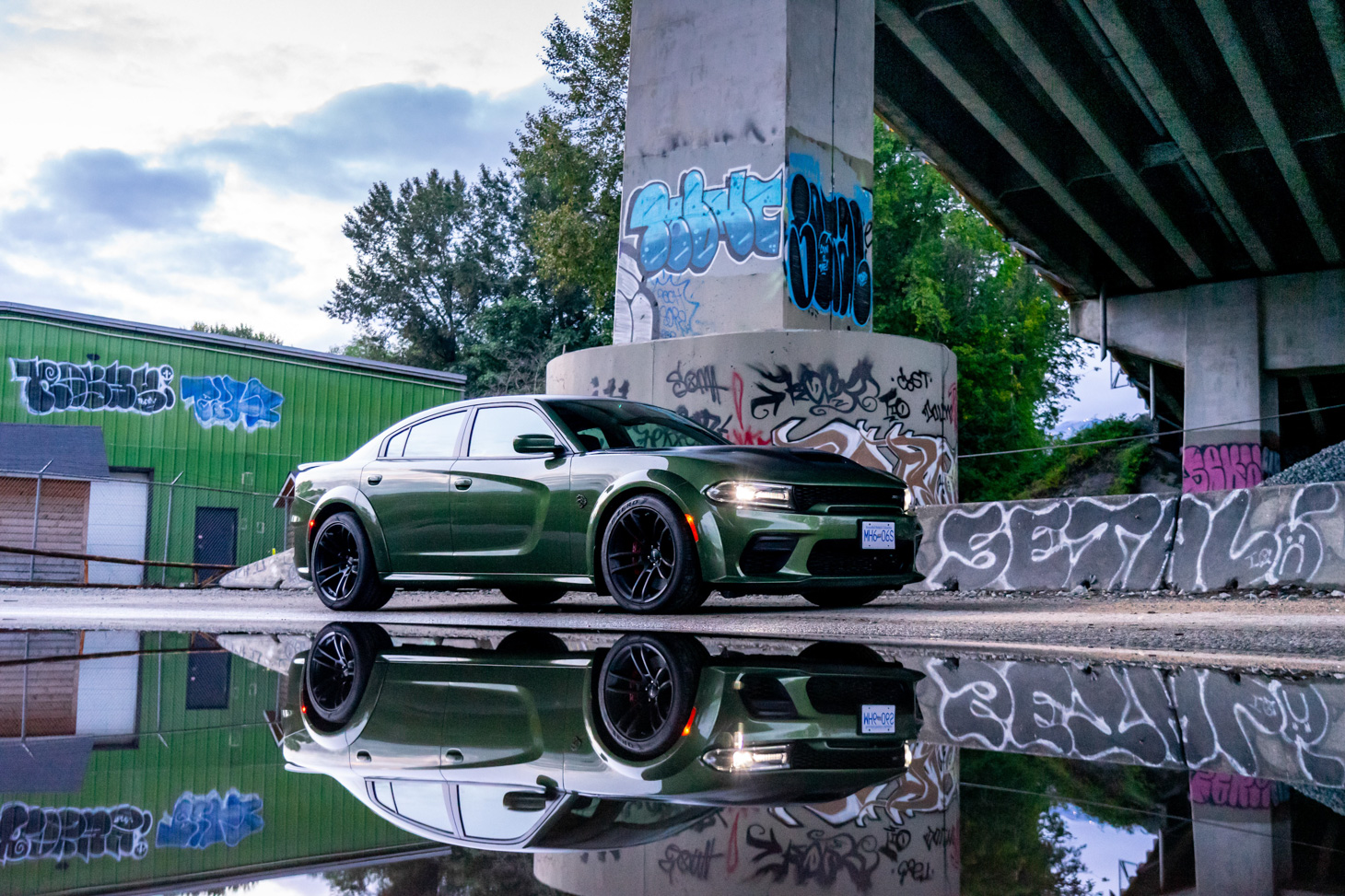
The Dodge Charger is the Challenger’s four-door cousin.
The chassis underpinnings were already sorted out at this point, as the Challenger had to work on a shortened version of the platform used by the Chrysler 300C. The 300C itself was another nod to Dodge-Chrysler’s big-bodied sedans of the past and was sketched out by Montreal-raised designer Ralph Gilles, later the head of the company’s performance divisions.
At the time, Chrysler was partnering with Daimler-Benz, which meant some Mercedes-Benz parts found their way into the Charger, the 300C, and, eventually, the Challenger chassis. These included S-Class front control arms and a multi-link suspension from the E-Class.
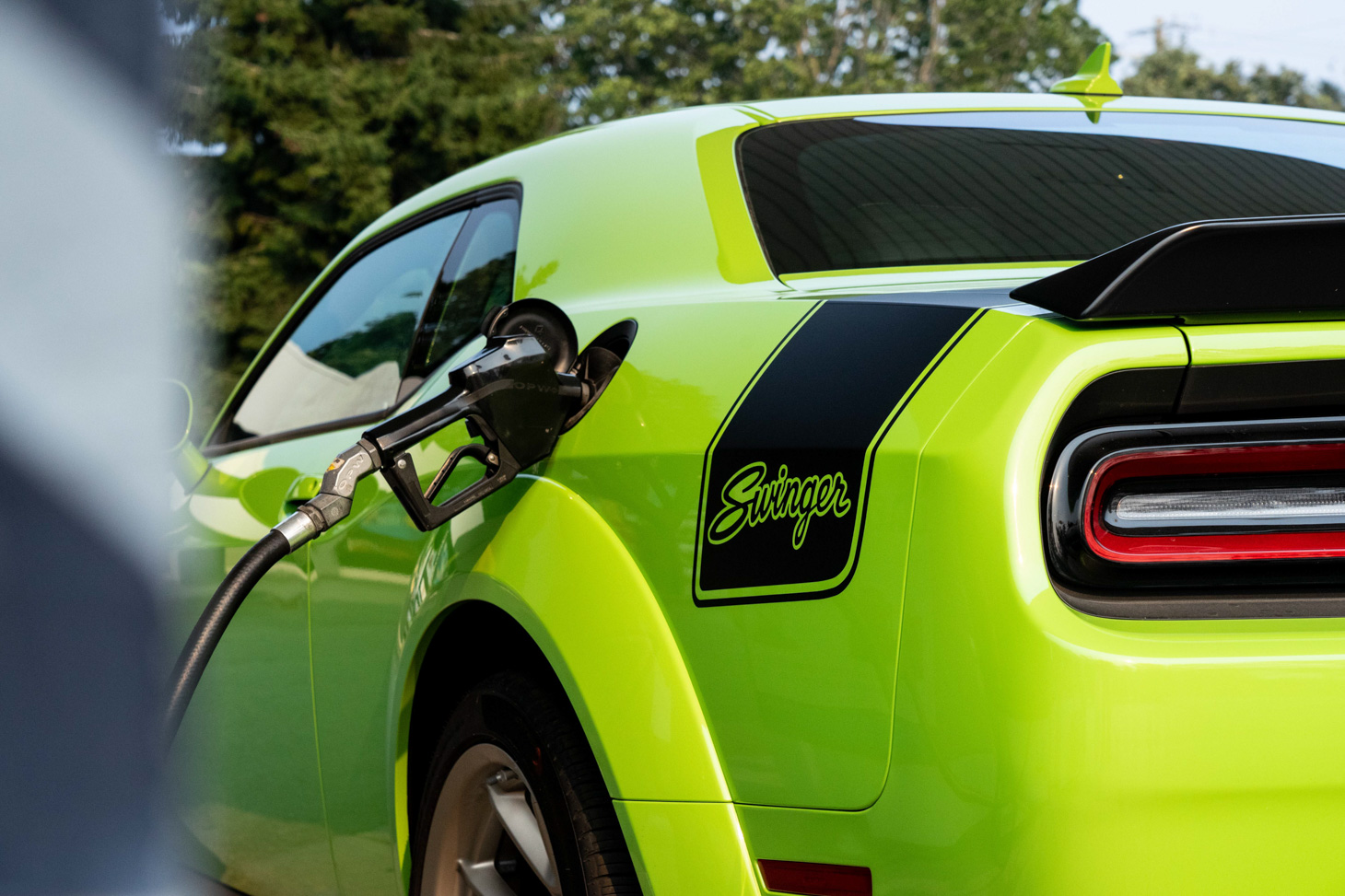
Mercedes-Benz built cars that were solid and unflappable but less nimble even in high-performance trim than those of chief rival BMW. Measured up against the likes of the Ford Mustang and, later, the Chevrolet Camaro, the Challenger SRT8 waded into the conversation like Moose Mason warning Reggie and Archie to stay away from Midge; it was a big bruiser, carrying a big stick, and there was nothing soft-spoken about it.
Equipped with a 425 horsepower 6.1-litre V8 as the only engine option to start, the Challenger lived up to its name. It sold out immediately, and drivers bayed for more. By 2009 you could get a less-thirsty V6 if you just wanted the looks, and a smaller V8 option that still had that signature Hemi rumble.
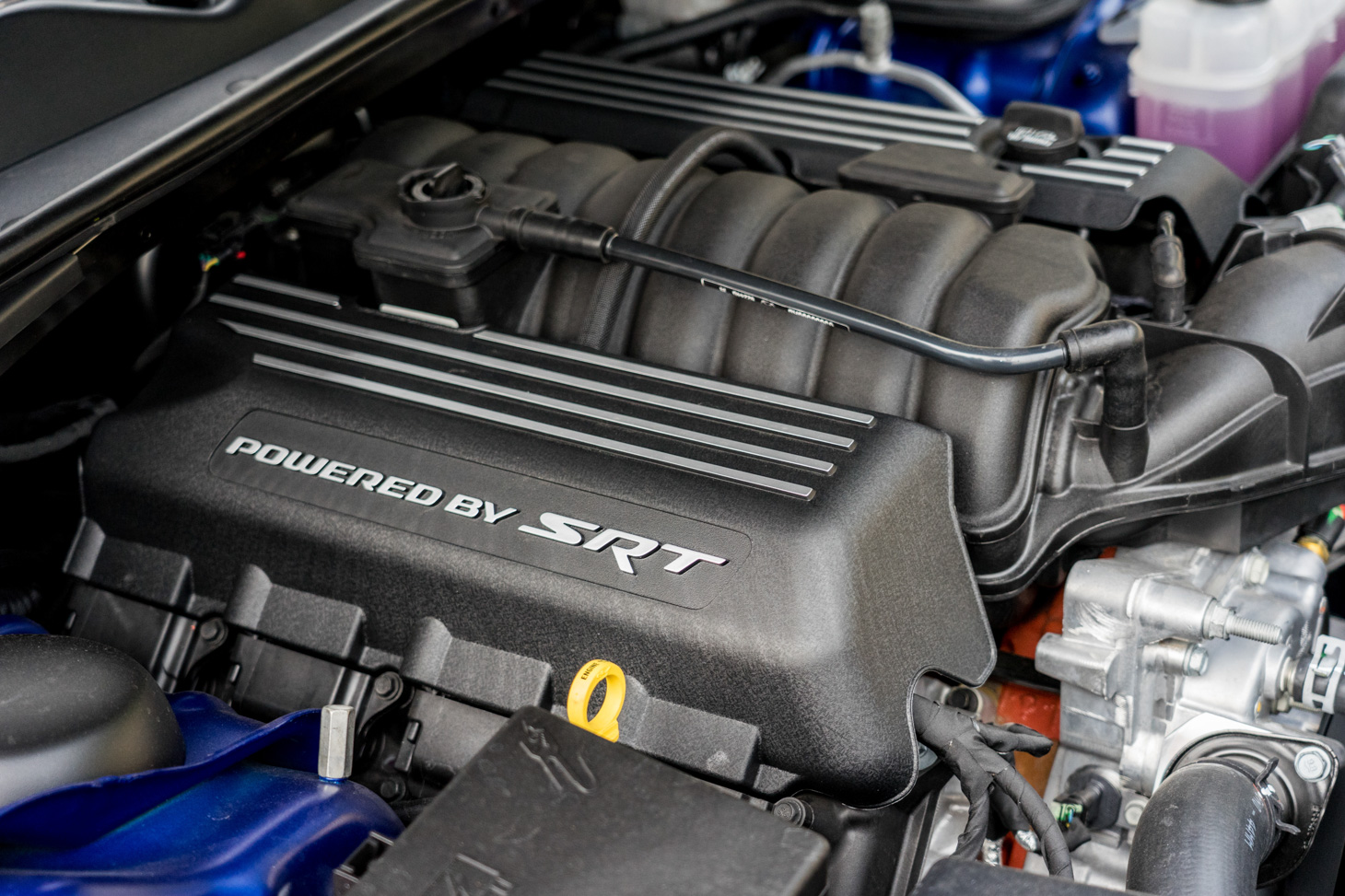
We should probably talk about what a Hemi actually is. Put simply, it’s a hemispherical combustion chamber (where fuel and air are squeezed together and ignited), and there’s really nothing special about it. A Mazda MX-5 has a more-complex combustion chamber. However, in the 1960s and 1970s heyday of the Challenger and Charger, Hemi-trademarked V8s were heroes in NASCAR and drag-racing. Boasting that your 2010 Challenger had a Hemi in it was just part of the nostalgia.
Nostalgia is a hell of a drug, but it only goes so far. The Mustang and the Camaro, while theoretical rivals to the Challenger, were really fighting each other, with the big Dodge in the bleachers. Ford and Chevrolet made their pony cars ever faster and more vicious, pouring on the power but also making them legitimately capable on track. The Challenger was roomier and arguably more comfortable, but in terms of sophistication it was a hockey enforcer. It still could cross-check, but the competition was skating rings around it.
Dodge, part of the Fiat-Chrysler group by this point, had a simple response: Oh yeah? We’ll show you. The 2015 year debuted a special version of the Challenger called the Hellcat, and it came equipped not with weight savings or a track-tuned suspension but with a ludicrously powerful 707-horsepower supercharged V8.
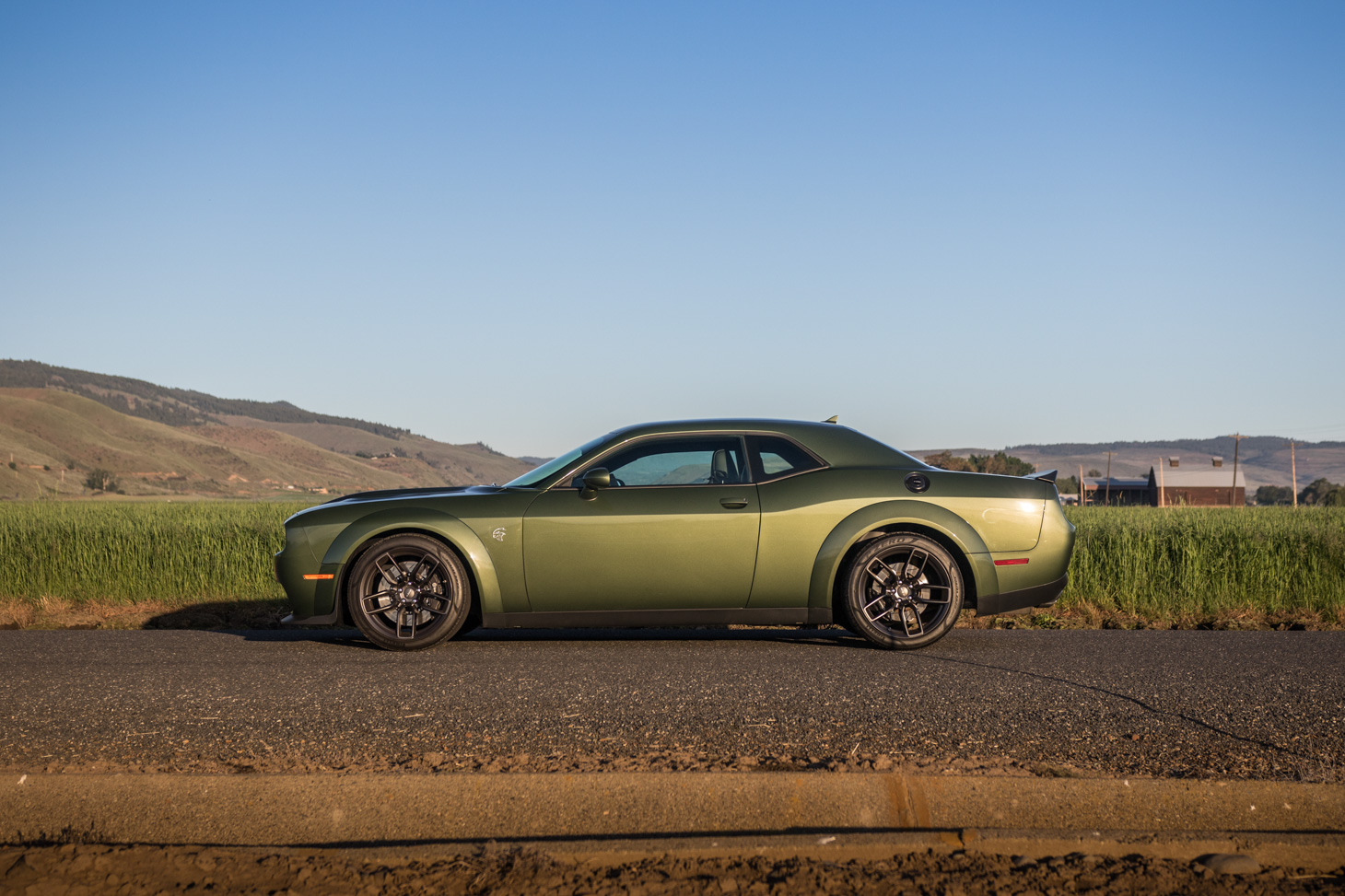
Then, deciding this wasn’t nearly silly enough, engineers looked at the nearly two-metre-wide coupe and asked the important question, “Okay, but what if it was even wider?” Their answer was the widebody Challenger and Charger variants, available in both Hellcat and non-supercharged V8 formats.
The last Challenger to leave the Brampton line was a top-of-the-heap Demon 170 package. The Demon was a drag-racing-focused evolution of the Hellcat ethos, with a larger supercharger pushing power to a staggering 840 horsepower. Among its more thoroughly ludicrous achievements is being the first production car that would do wheelies right out of the box. The 170 package dialed the boost up to a why-not 1025 horsepower. The Challenger ends its run as more life-sized Hot Wheels than road car.
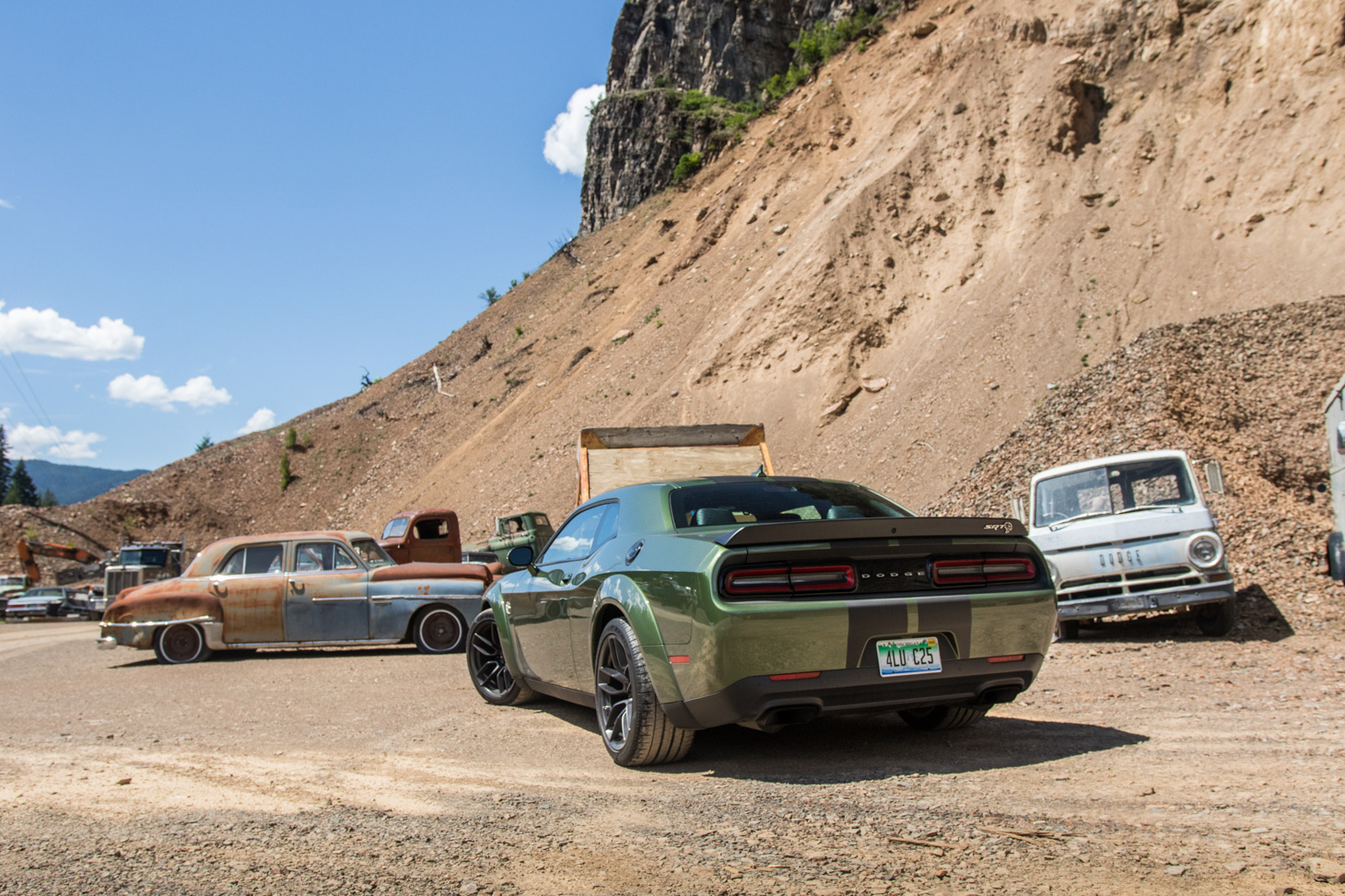
But it is important to note that the Challenger and Charger were far more than just headline-grabbing Hellcats and Demons. Throughout the run, Dodge was one of the few manufacturers to offer a wide variety of colour combinations, including stripes and countless special editions. If you wanted a Barney-purple V6, Dodge would sell you that. If you wanted a widebody with the naturally aspirated 6.4-litre V8, upgraded brakes, and a manual transmission, Dodge would sell you one of those, too.
Rather than bellowing V8s, this last is perhaps the best part of 1970s nostalgia that the big Dodges revived. Outside of the odd supercar, traffic is ever more monochrome these days: silvers and greys and home-appliance whites. Even in an all-electric future, a bit of that brash Mopar character wouldn’t go amiss.
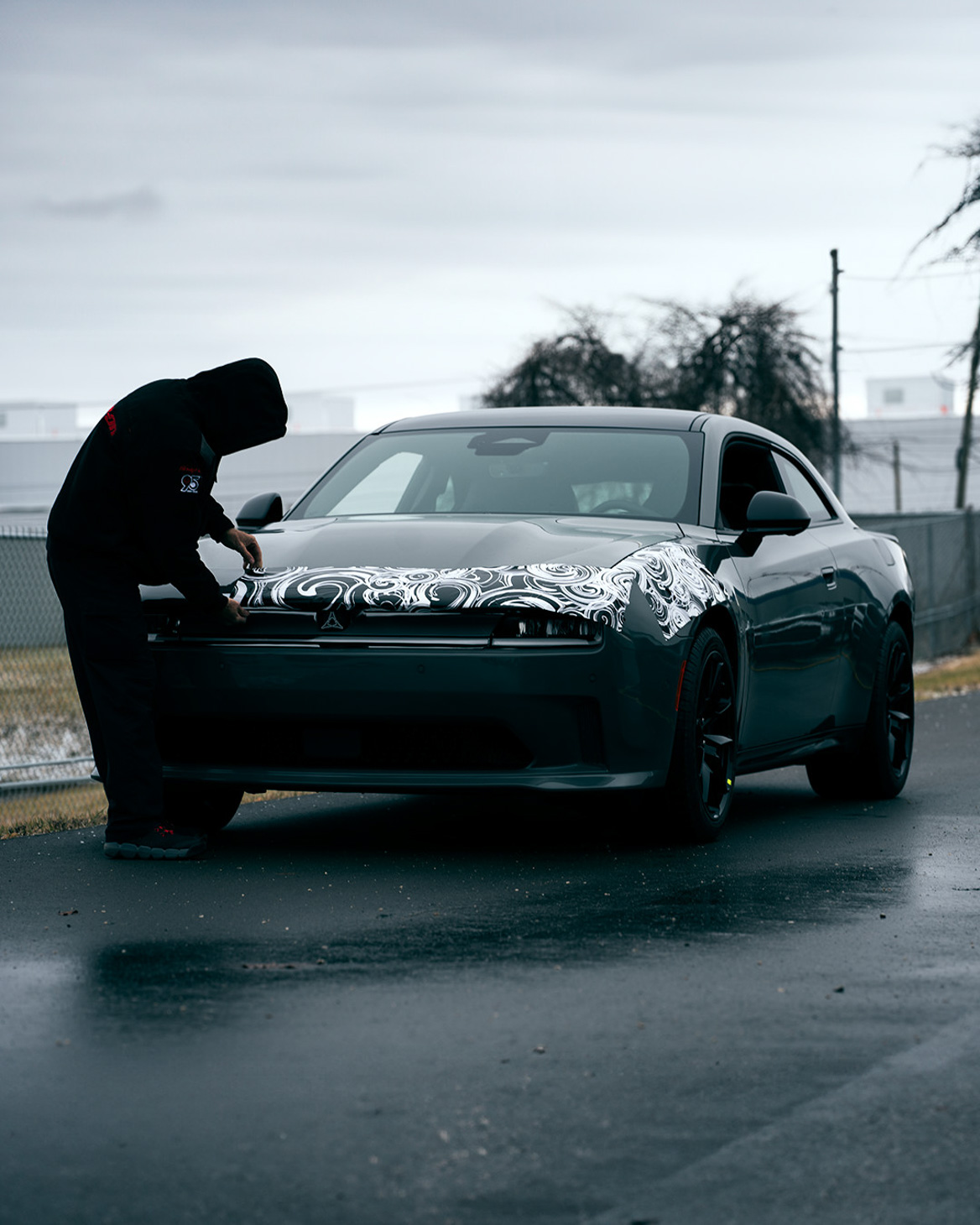
A toast, then, both to the past of the big-bodied Dodges and to their future. In 2022, Dodge showed off a concept it called the Charger Daytona SRT, complete with full battery-electric power and a Hellcat-like screech. “Charger” is, of course, too obviously a perfect nameplate for an EV for Dodge to ever give it up. However, the previous version was a sedan, and in just-spotted pre-production form, this new EV is clearly a Challenger-inspired coupe.
As was the case by the mid-1970s, the days of the gas-swilling muscle cars are behind us. But EVs have their own type of torque-rich muscle to flex. Everybody loves a charming outlaw. Big, bad Dodges might be gone for now. But they’ll be back.

